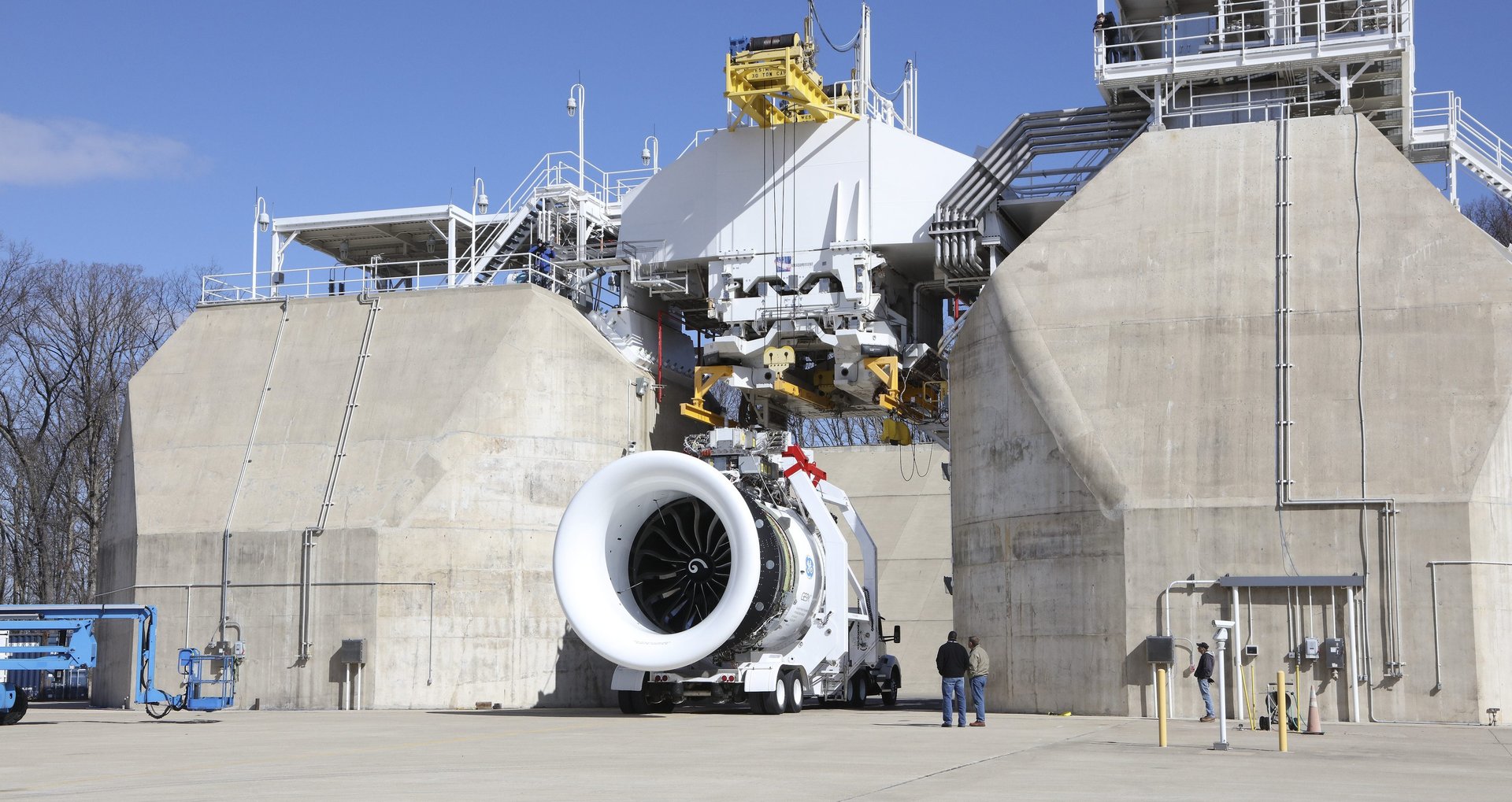GE fired up world’s largest commercial jet engine using 3D-printed metal parts
General Electric this month started testing the largest jet engine ever built, at its wooded test site near Peebles, Ohio. The new engine, the GE9X, is more efficient, more powerful, and more heat resistant than its predecessors. It’s also made with 3D-printed parts.


General Electric this month started testing the largest jet engine ever built, at its wooded test site near Peebles, Ohio. The new engine, the GE9X, is more efficient, more powerful, and more heat resistant than its predecessors. It’s also made with 3D-printed parts.
Its development marks another milestone in the aviation industry’s evolution from building airplanes with rivets and aluminum to assembling them with carbon-fiber materials and printers that give shape to liquid metal.
GE, which built the first American jet engine in 1942, has been quick to use 3D-printing technology, computer-aided design, and new materials to render parts once impossible to make using conventional methods. It printed an entire working jet engine the size of an American football in 2015, and received the first FAA approval for its engine-temperature sensor the same year. It’s now testing out new designs and manufacturing methods to see how they can be integrated into existing product lines.
The GE9X was designed for the Boeing 777X, expected to be the most efficient twin-engine jet when it takes flight toward the end of the decade. The engine spans a record 11 feet (3.35 meters) in diameter and generates 100,000 pounds (45 metric tons) of thrust, about one-third the force of the space shuttle’s main engine.
Each engine has 16 carbon fiber fan blades and 19 3D-printed fuel nozzles. The nozzles, which spray fuel inside the combustion chamber, replaced conventional nozzles that had more than a dozen welded parts. This helped reduce weight by 25%, increase fuel efficiency, and make it the company’s quietest engine to date.
GE says it already has more than 700 orders, worth $29 billion, for the GE9X. It is scheduled to go into production in 2020.
Correction: An earlier version of this article stated that GE built the first jet engine in 1942. It was the first American jet engine.